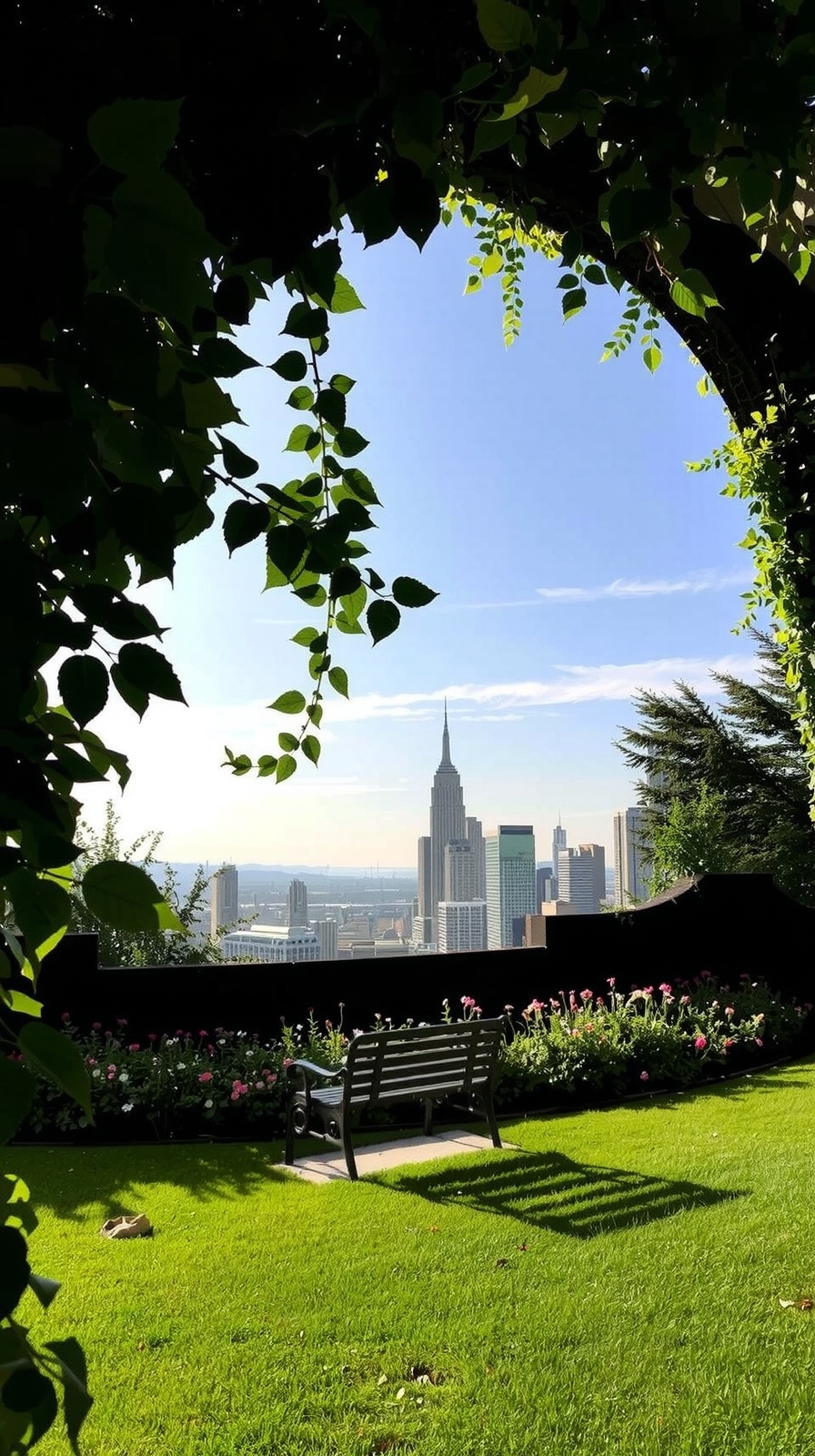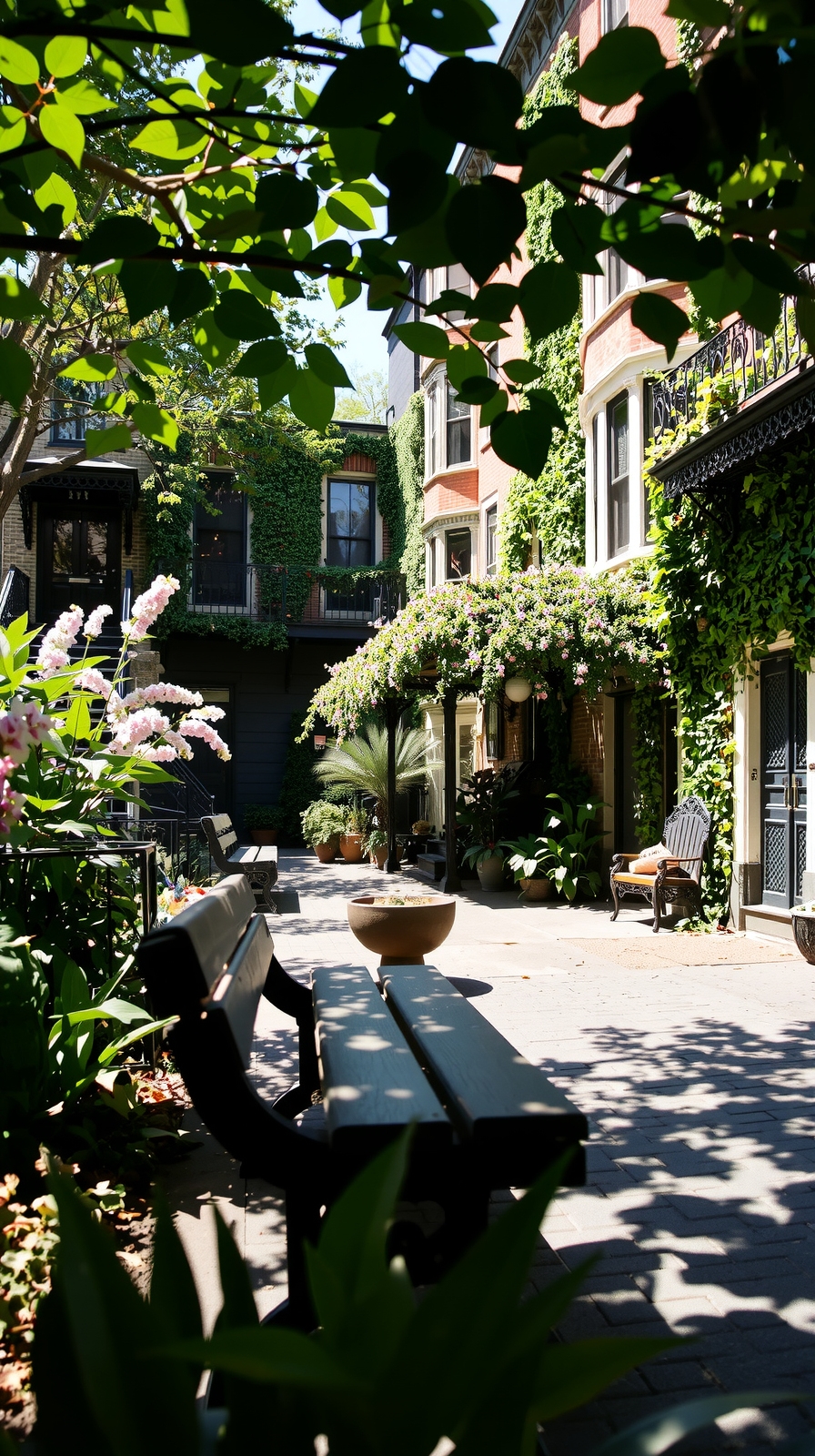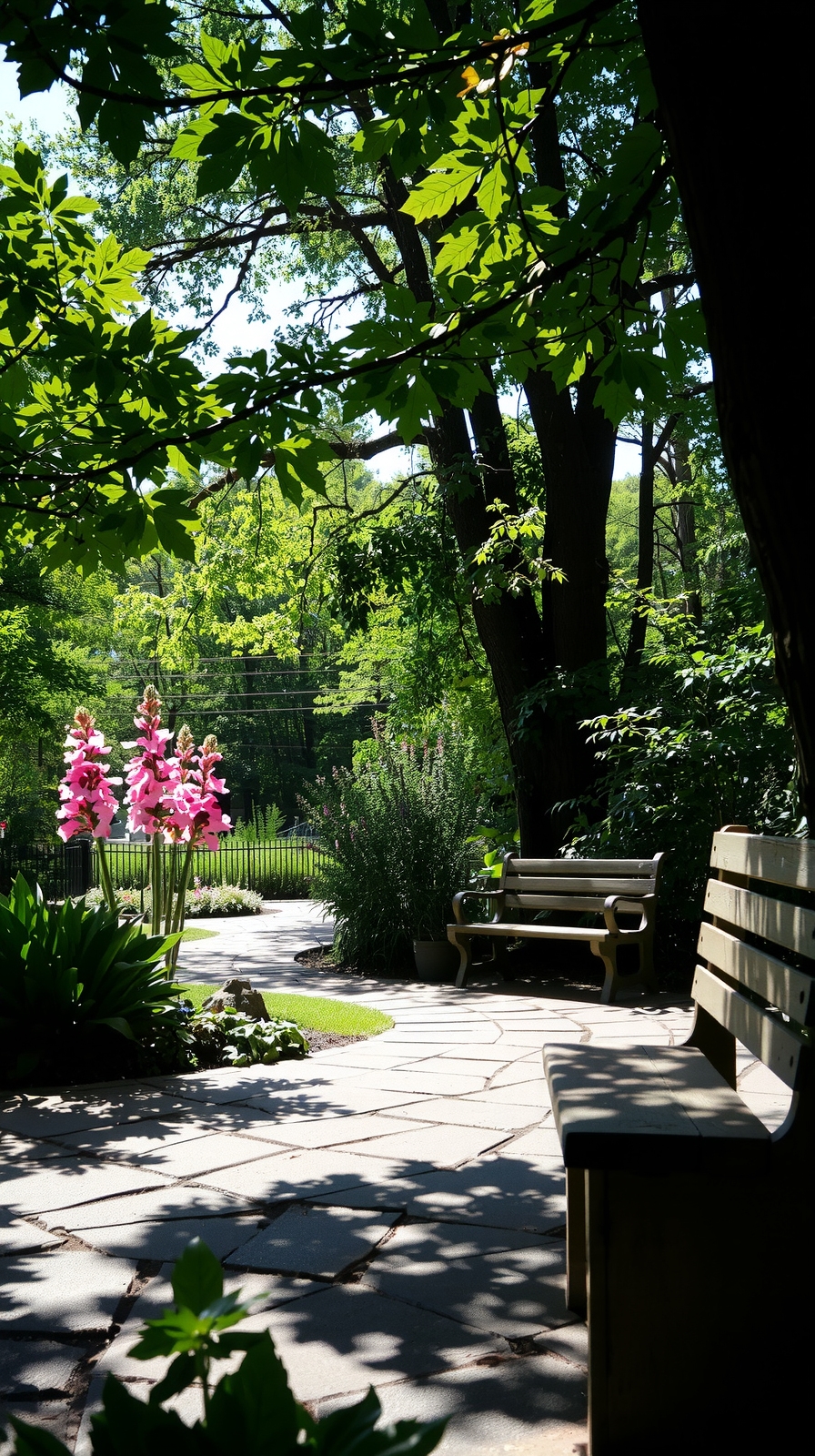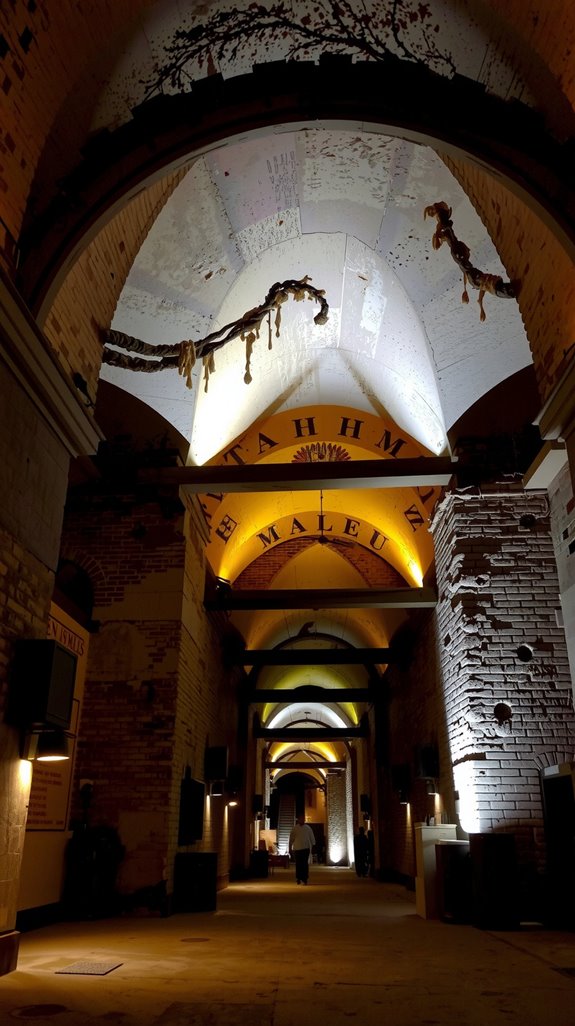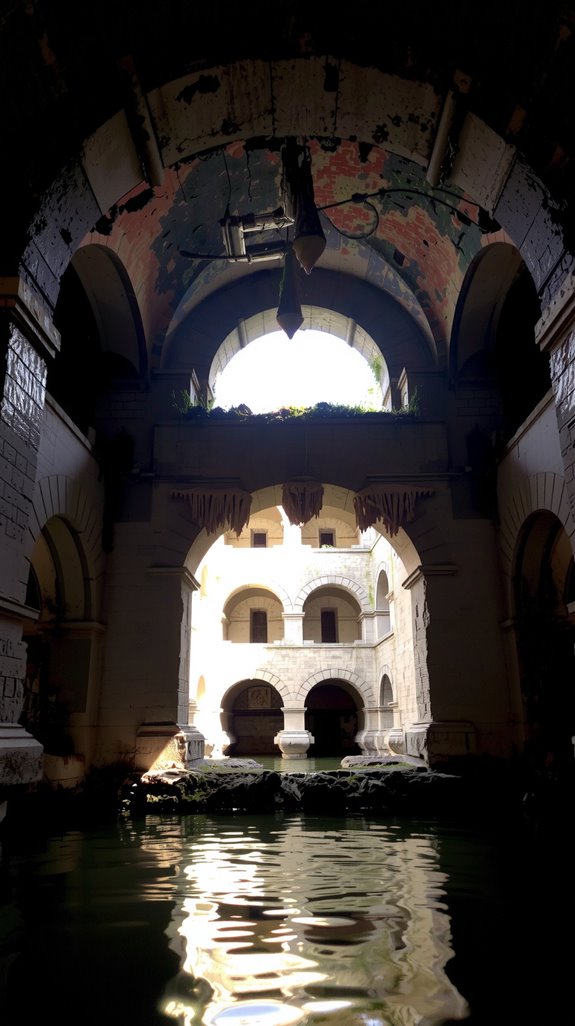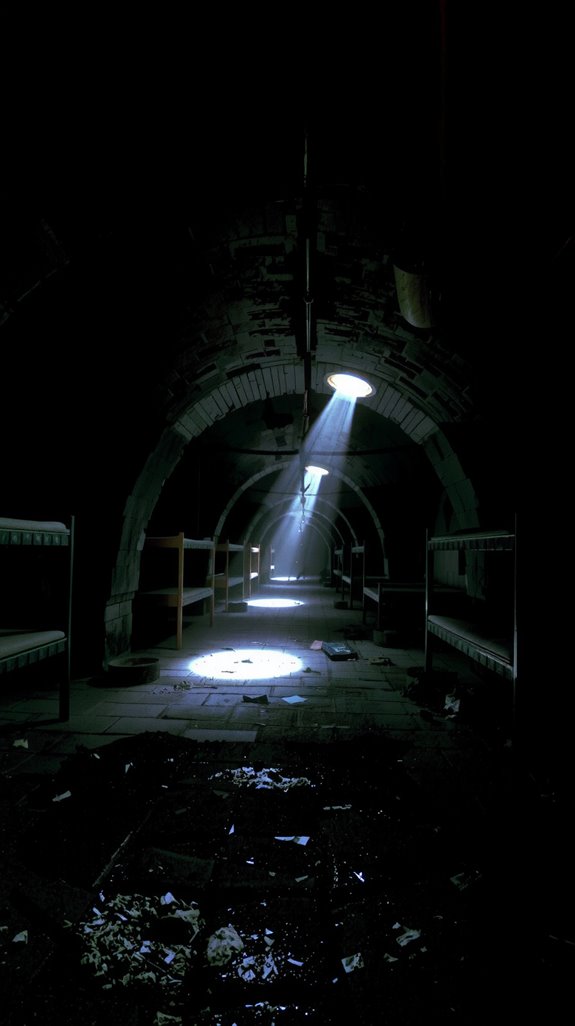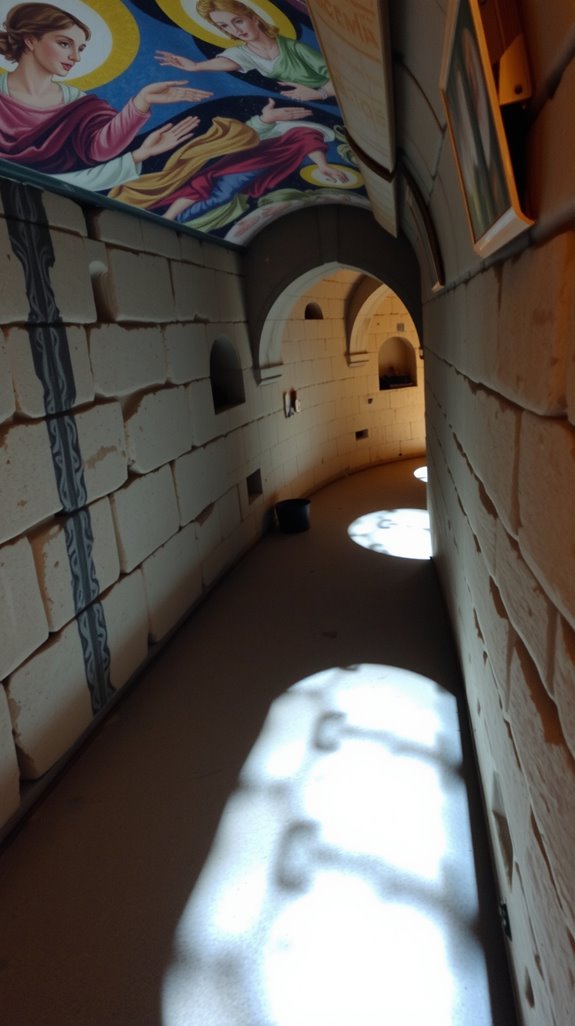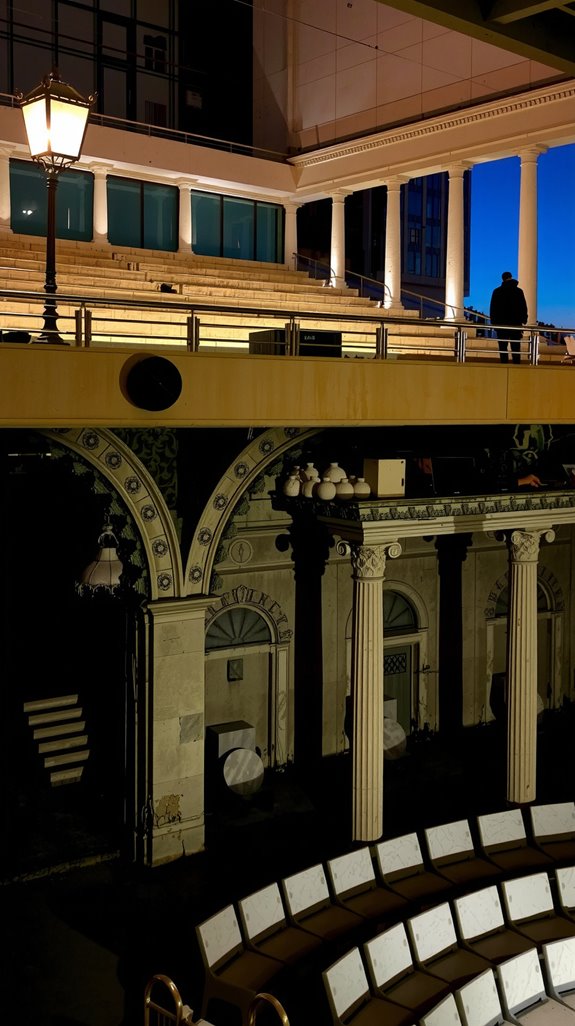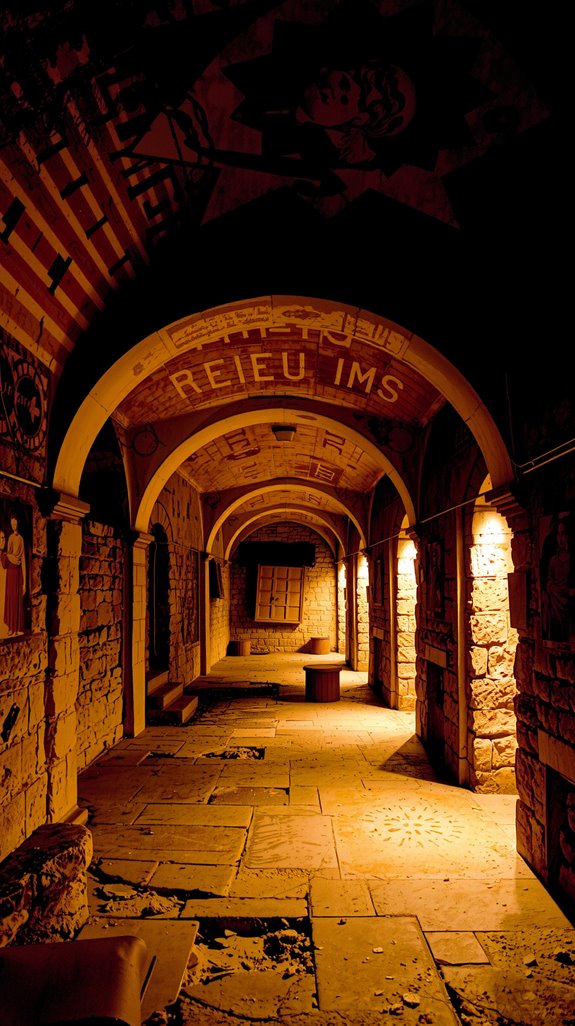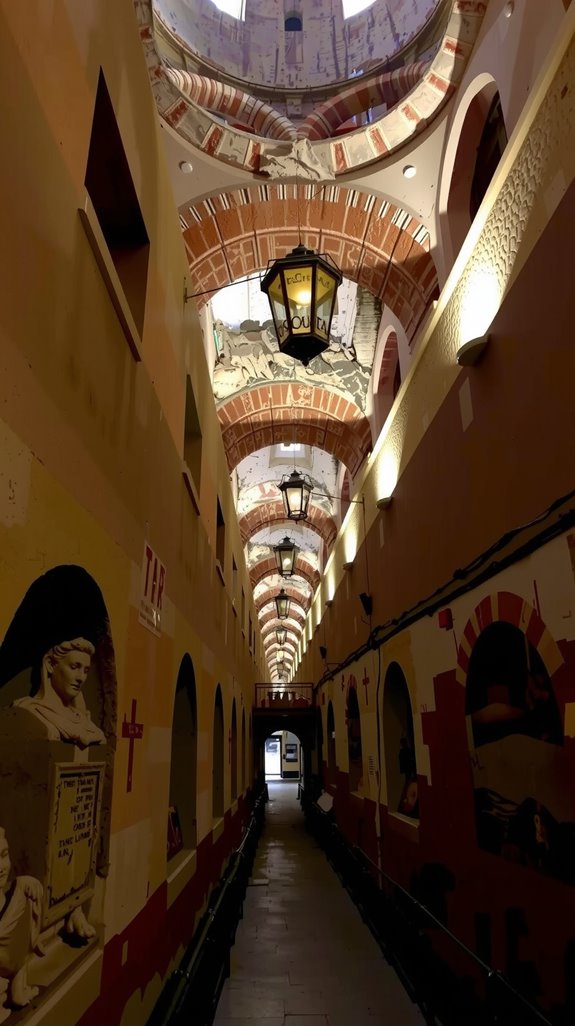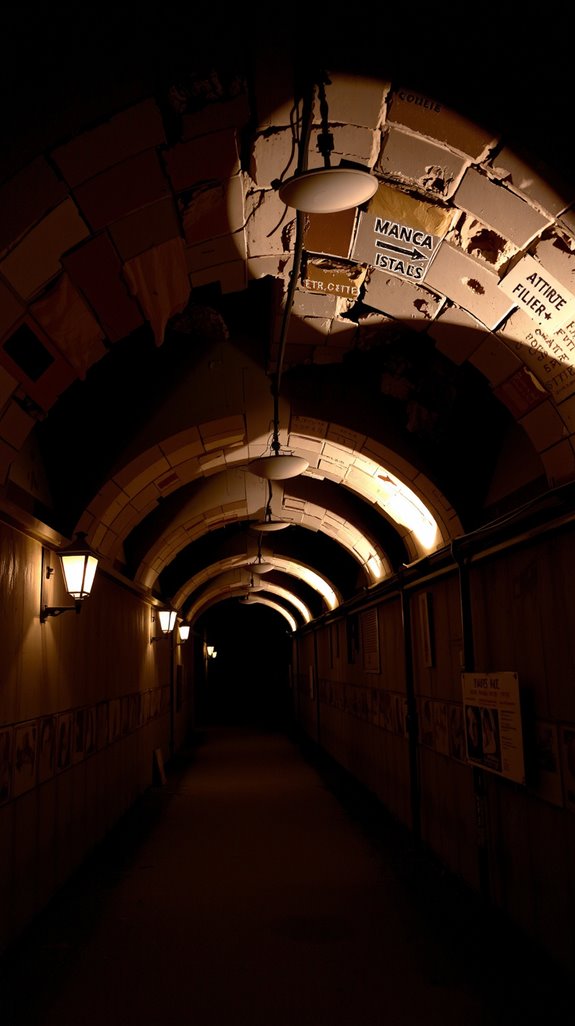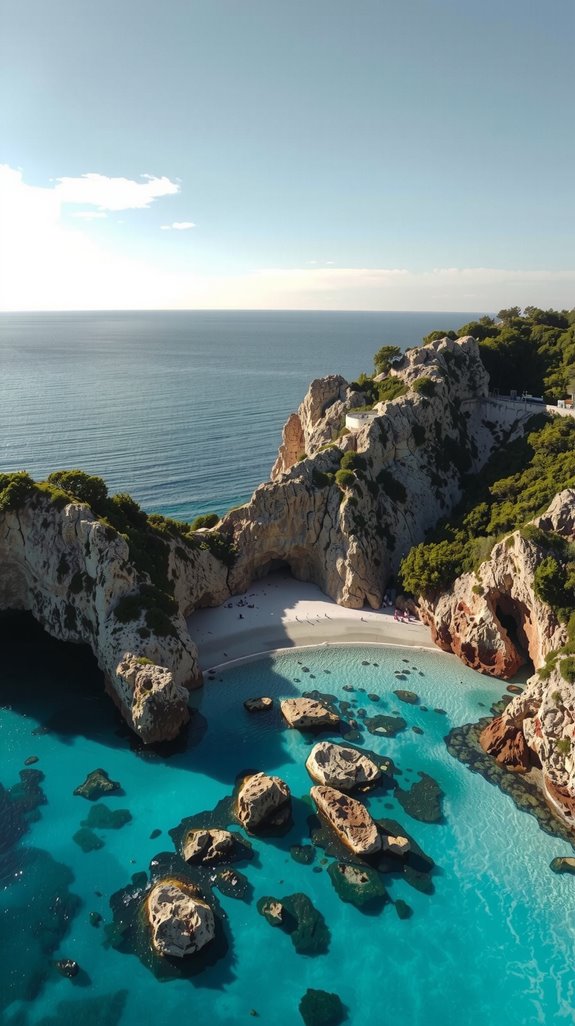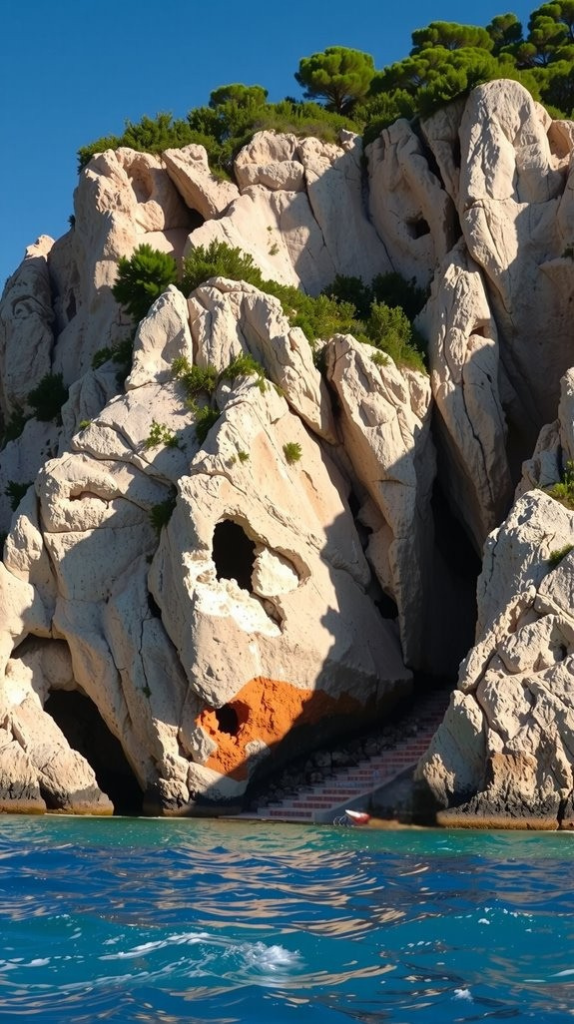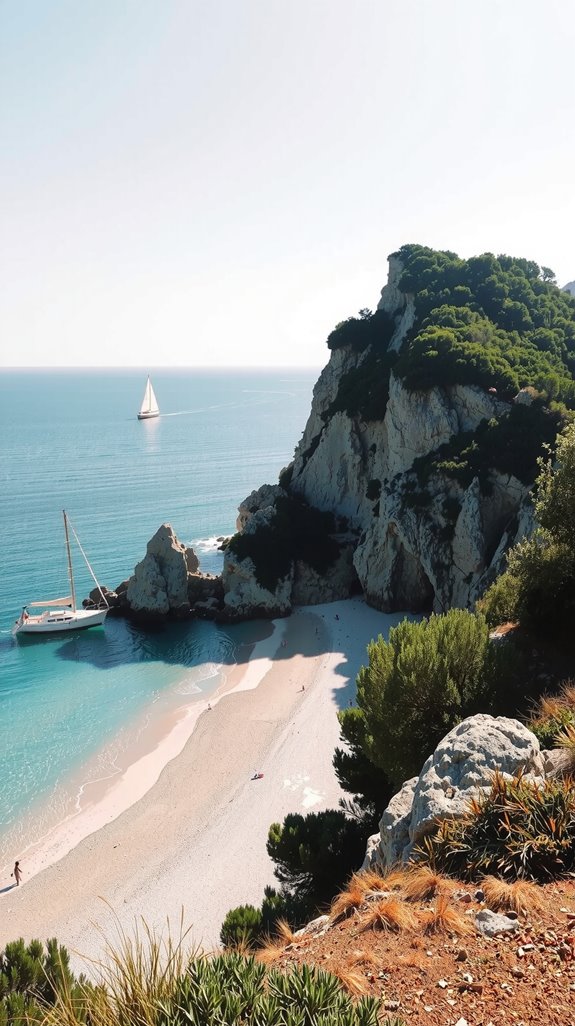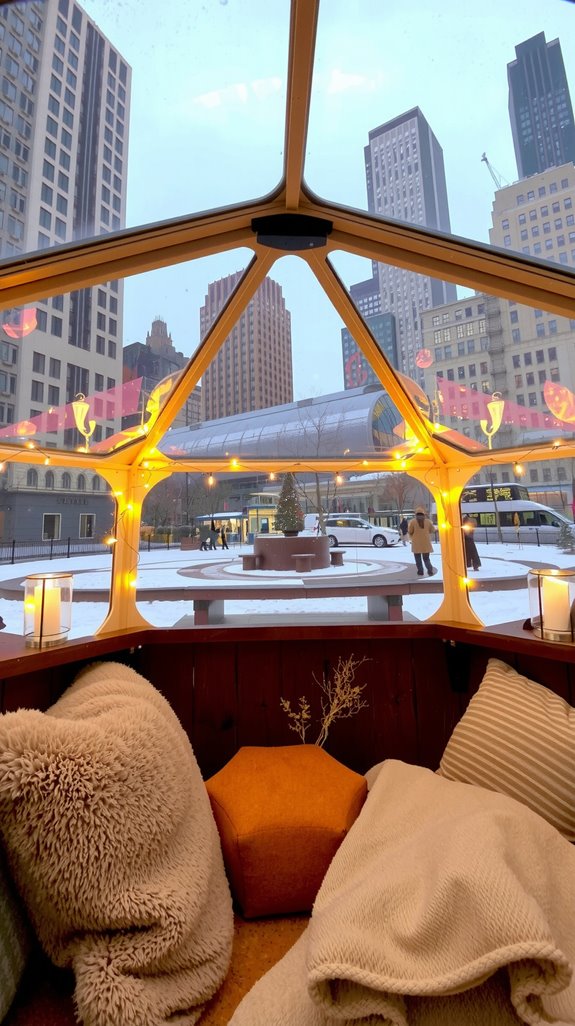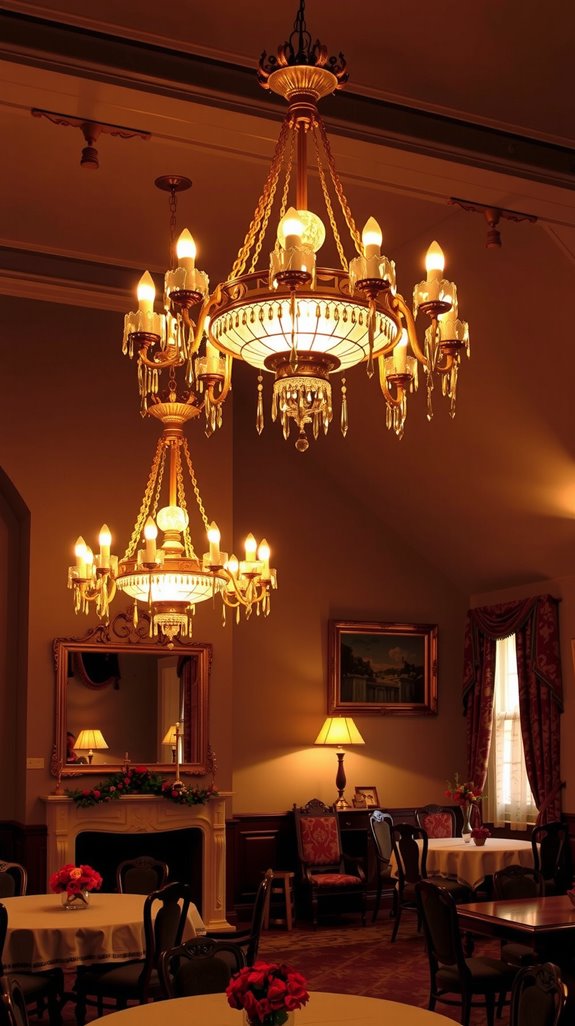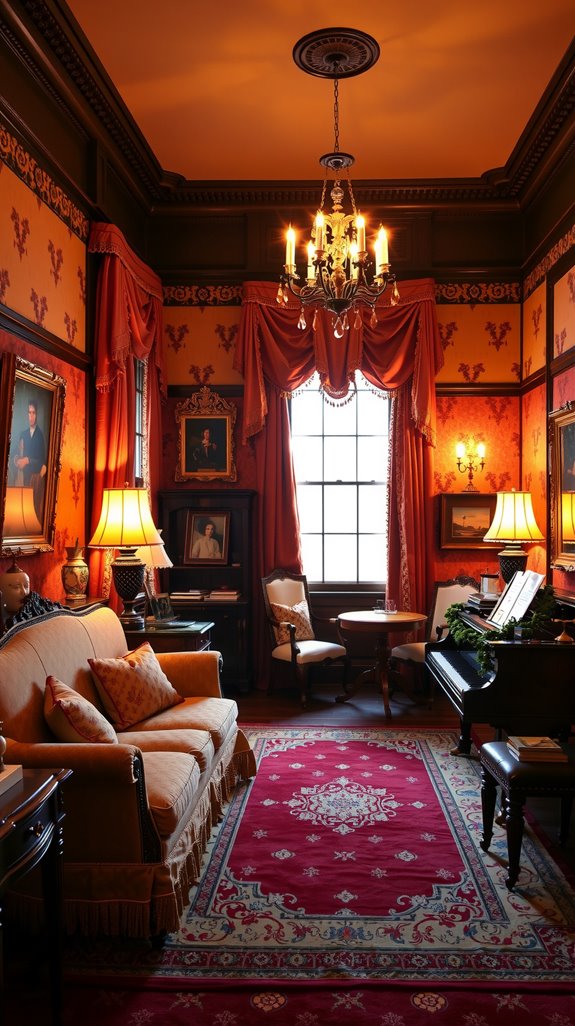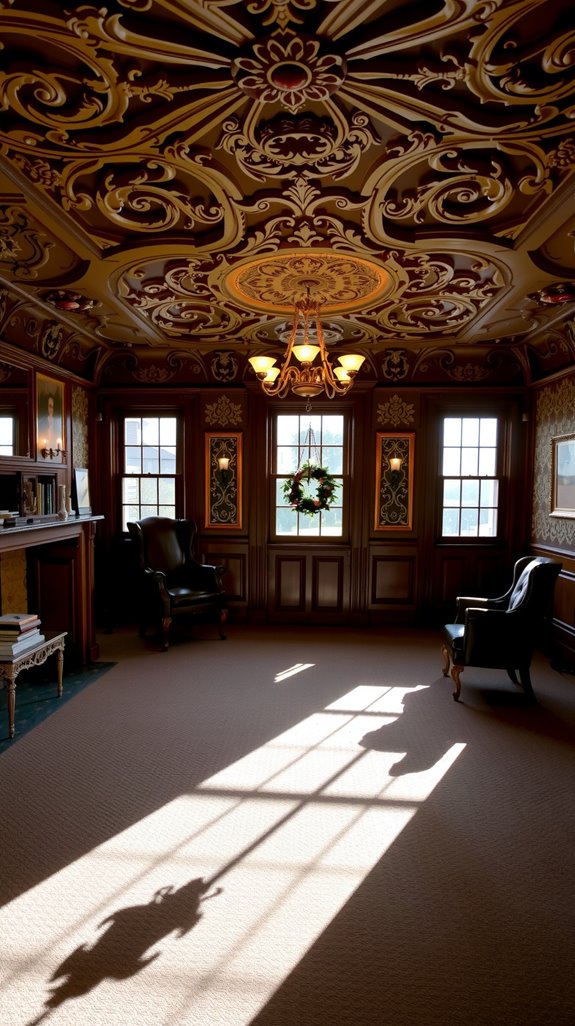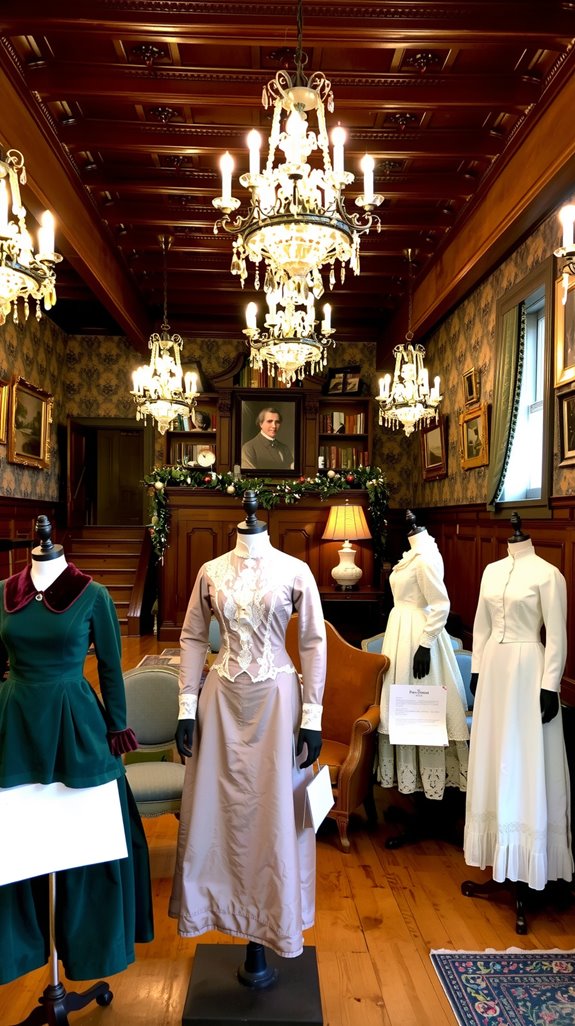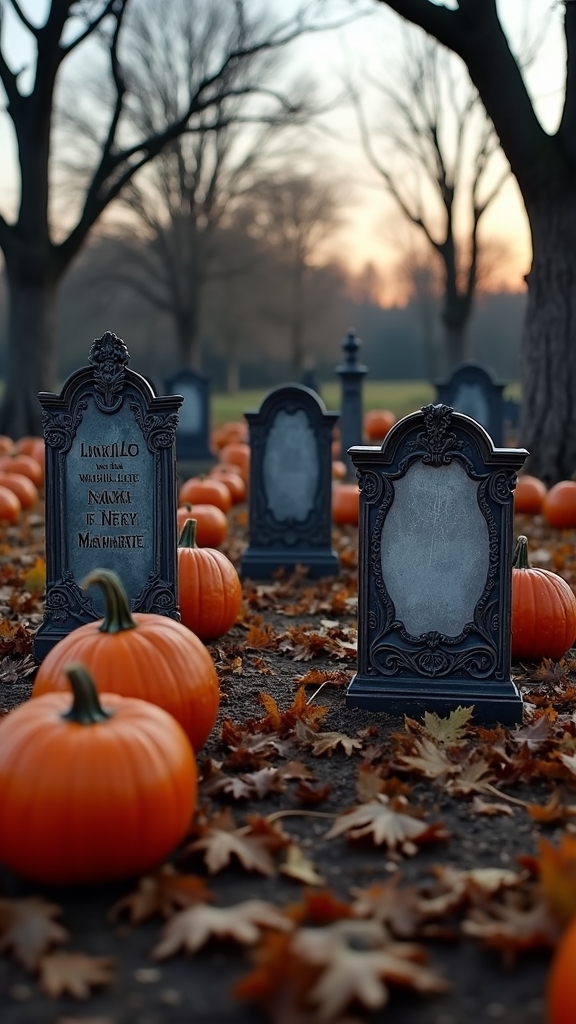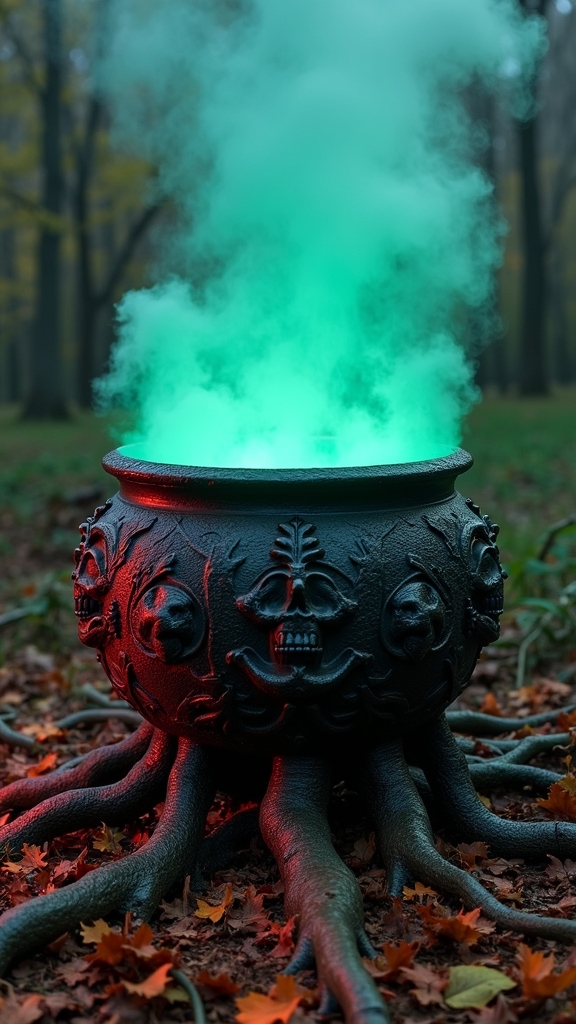You’ve likely passed dozens of abandoned buildings across New York without realizing their dark histories.
From psychiatric facilities that once held thousands to quarantine islands where society’s outcasts lived in isolation, these 18 locations stand as haunting reminders of the state’s forgotten past.
Each site tells a distinct story of ambition, tragedy, or neglect, and some remain accessible to those curious enough to explore what’s been left behind.
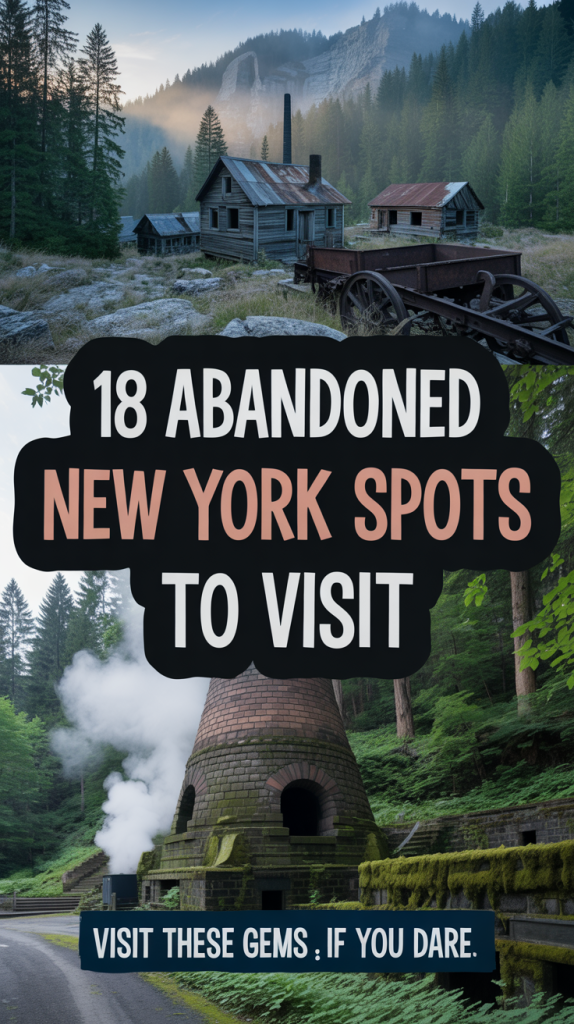
Contents
- 1 Key Takeaways
- 2 Red Hook Grain Terminal: Industrial Gothic on the Brooklyn Waterfront
- 3 North Brother Island: Where Typhoid Mary Was Quarantined
- 4 Kings Park Psychiatric Center: Long Island’s Haunting Asylum
- 5 Overlook Mountain House Ruins: Woodstock’s Collapsed Resort
- 6 Renwick Smallpox Hospital: Gothic Revival Medical Ruin
- 7 Letchworth Village: The Secluded Institutional Settlement in Thiells
- 8 Wyndclyffe Mansion: Hudson Valley’s Remote Victorian Ruin
- 9 Central Warehouse: Albany’s Massive Abandoned Industrial Complex
- 10 Grossinger’s Resort: The Faded Glory of the Borscht Belt
- 11 Rockland Psychiatric Center: Tragedy and Abandonment in Orangeburg
- 12 P.S. 186: West Harlem’s Italian Renaissance School Left to Decay
- 13 Tahawus: The Adirondack Town Abandoned Overnight
- 14 Adirondack Iron Works: Remote 19th Century Mining Ruins
- 15 Frontier Town: Abandoned Western Theme Park in the Mountains
- 16 Camp Santanoni: Gilded Age Great Camp Frozen in Time
- 17 Riverside Hospital: North Brother Island’s Quarantine Facility
- 18 Lake Placid Club: Luxury Adirondack Hotel Now in Ruins
- 19 Jennie G. Hotel: Liberty’s Overgrown Hilltop Lodge
- 20 Conclusion
Key Takeaways
- New York’s abandoned psychiatric centers like Kings Park and Rockland housed thousands of patients before closure, now serving as eerie urban exploration sites.
- North Brother Island quarantined disease patients including Typhoid Mary from the 1880s to 1963, now functioning as a restricted bird sanctuary.
- Gothic Revival Renwick Smallpox Hospital, designed by James Renwick Jr. in 1854, stands as a federally protected landmark ruin on Roosevelt Island.
- Grossinger’s Resort transformed from a thriving Borscht Belt destination founded in 1914 to crumbling ruins overtaken by Catskills wilderness.
- Industrial sites like Red Hook Grain Terminal and Central Warehouse remain massive concrete shells, symbolizing New York’s declined manufacturing prosperity.
Red Hook Grain Terminal: Industrial Gothic on the Brooklyn Waterfront
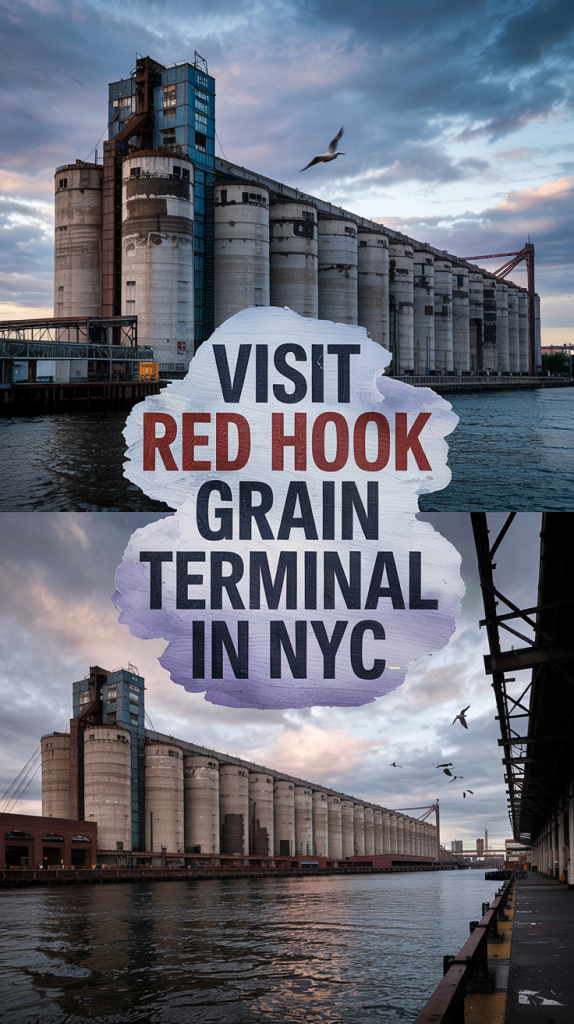
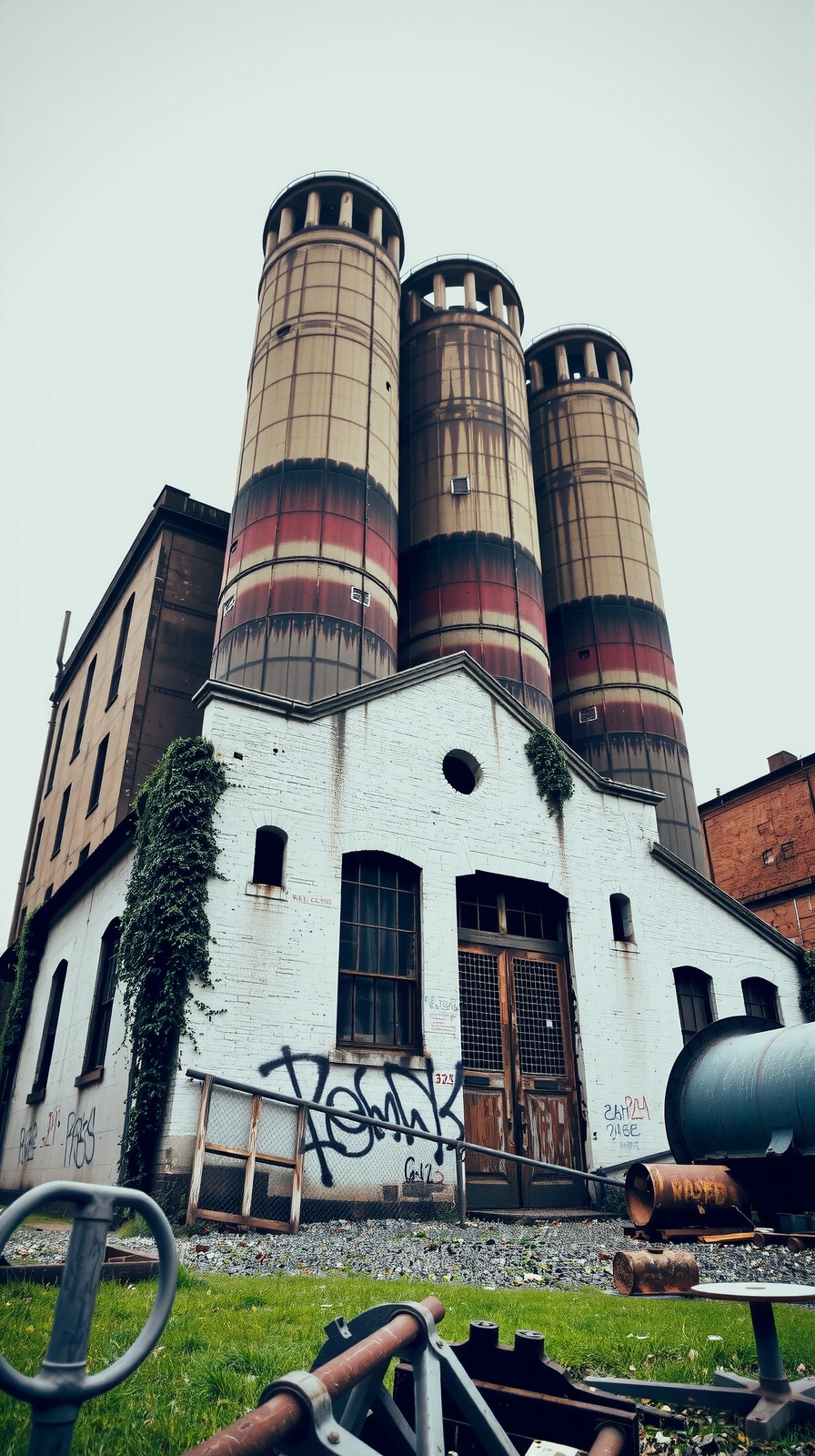
The Red Hook Grain Terminal rises twelve stories above Brooklyn’s industrial waterfront, a 430-foot-long concrete monument to failed ambition.
Built in 1922 with fifty-four cement silos, each 120 feet tall, this fireproof structure immediately proved redundant and never turned a profit.
Decommissioned in 1965, it’s stood abandoned for decades, its black mold-covered walls inspiring architects worldwide while symbolizing Brooklyn’s vanished industrial era. The terminal was constructed in just 16 months at a cost of $2.5 million to upgrade New York’s aging canal system.
North Brother Island: Where Typhoid Mary Was Quarantined


While Brooklyn’s waterfront showcases industrial abandonment, a different kind of desolation exists just eight miles north in the East River.
North Brother Island served as New York City‘s quarantine site from the 1880s through 1963, housing patients with smallpox, tuberculosis, and typhoid fever.
Mary Mallon, known as Typhoid Mary, spent 26 years confined here until her death in 1938, making this her prison and final resting place.
The island’s 25 decaying buildings now serve as a bird sanctuary, hosting gulls, herons, cormorants, and egrets with severely restricted public access.
Kings Park Psychiatric Center: Long Island’s Haunting Asylum


Sprawling across more than 800 acres of Long Island, Kings Park Psychiatric Center began its existence in 1885 as Kings County Asylum, a response to Brooklyn’s overflowing psychiatric facilities.
The farm colony grew into a massive complex housing over 9,000 patients by 1954.
The facility’s most recognizable structure, Building 93, is a 13-story neoclassical tower that once housed over 1,200 individuals and served as a landmark for boaters navigating the Long Island Sound.
After closing in 1996, its 150+ decaying buildings became magnets for urban explorers, standing as haunting reminders of America’s mental health care evolution.
Overlook Mountain House Ruins: Woodstock’s Collapsed Resort

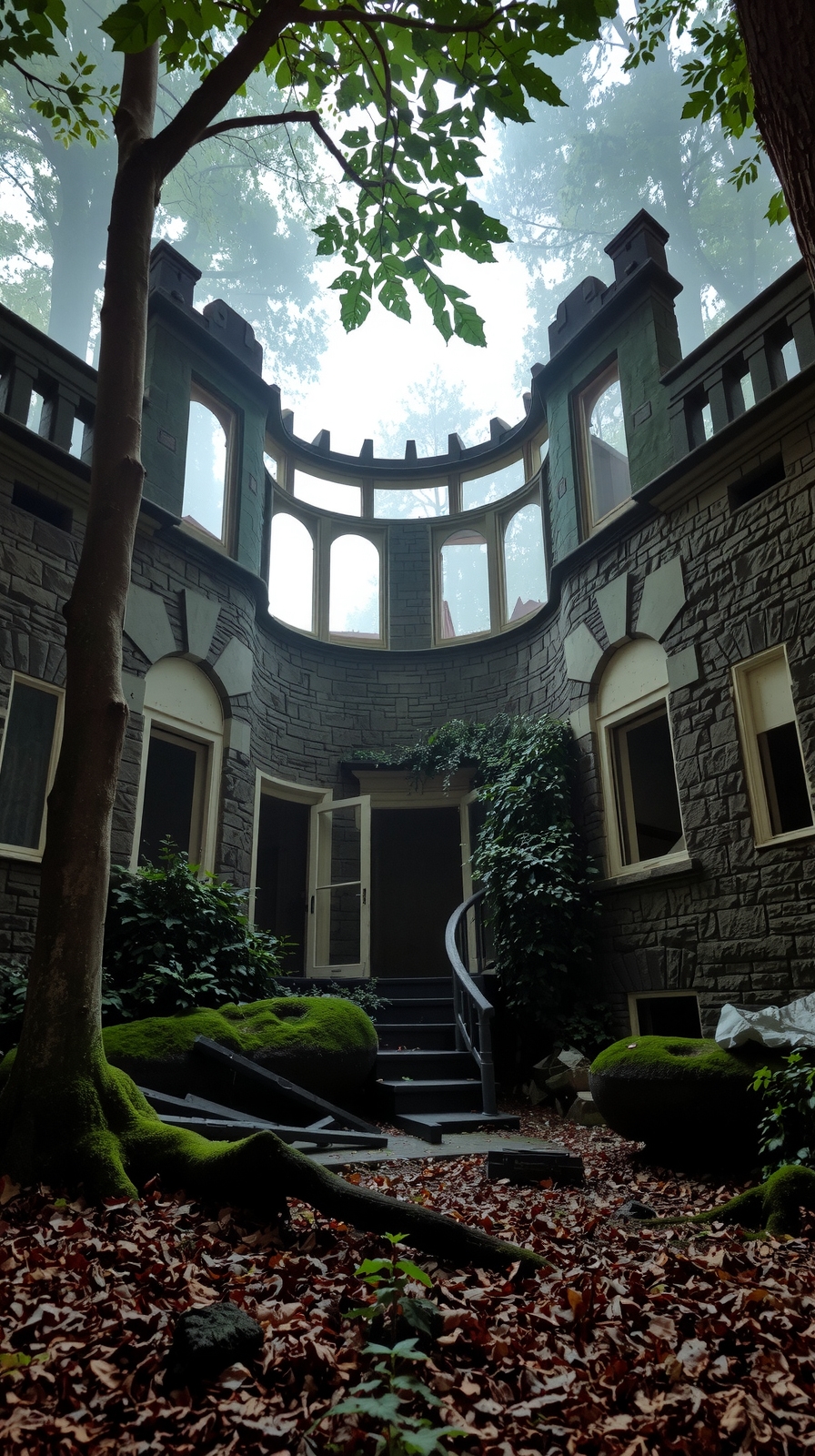
High atop Overlook Mountain near Woodstock, concrete walls stand as silent witnesses to a resort that never fulfilled its grand ambitions.
After fires destroyed previous hotels in 1875 and 1923, reconstruction began during the 1920s but stalled due to financial constraints and the owner’s death.
New York State acquired the incomplete structure in the early 1940s, leaving haunting ruins that now attract hikers, exploring Catskill history.
The date “1928” carved into the façade marks how close the ambitious project came to completion before abandonment.
Renwick Smallpox Hospital: Gothic Revival Medical Ruin


Beyond the Catskills, Roosevelt Island harbors one of New York City’s most architecturally striking ruins.
The Renwick Smallpox Hospital, designed by James Renwick Jr. between 1854-1856, served as the city’s first dedicated smallpox quarantine facility. This Gothic Revival fortress, built by prison labor, isolated approximately 100 patients during devastating outbreaks.
After closing in 1875 it became a nurses’ training school before ultimately deteriorating into today’s federally-recognized landmark ruin.
The structure features distinctive pointed arch windows on the third floor, an atypical element for Gothic Revival architecture that adds to its haunting appearance.
Letchworth Village: The Secluded Institutional Settlement in Thiells
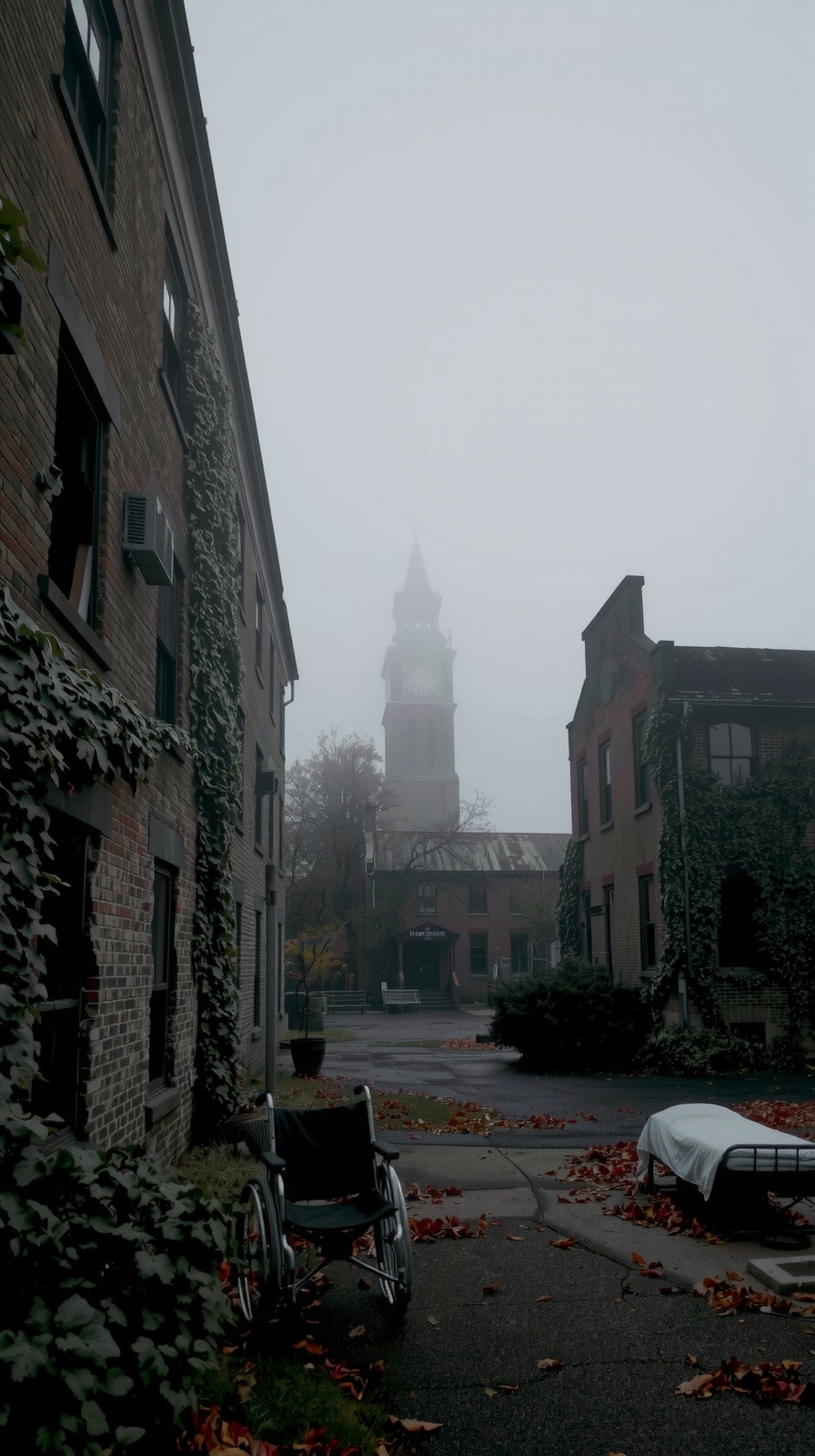
Hidden among the wooded hills of Thiells, New York, Letchworth Village once promised a revolutionary approach to caring for individuals with mental and physical disabilities.
Opened in 1911, this sprawling 2,000-acre campus housed up to 4,000 residents in neoclassical buildings designed for sunlight and pastoral comfort.
However, chronic underfunding led to severe overcrowding, neglect, and abuse. In 1972, Geraldo Rivera’s expose brought national attention to the deplorable conditions at institutions like Letchworth, documenting widespread patient abuse and neglect.
The facility closed in 1996 leaving haunting ruins.
Wyndclyffe Mansion: Hudson Valley’s Remote Victorian Ruin
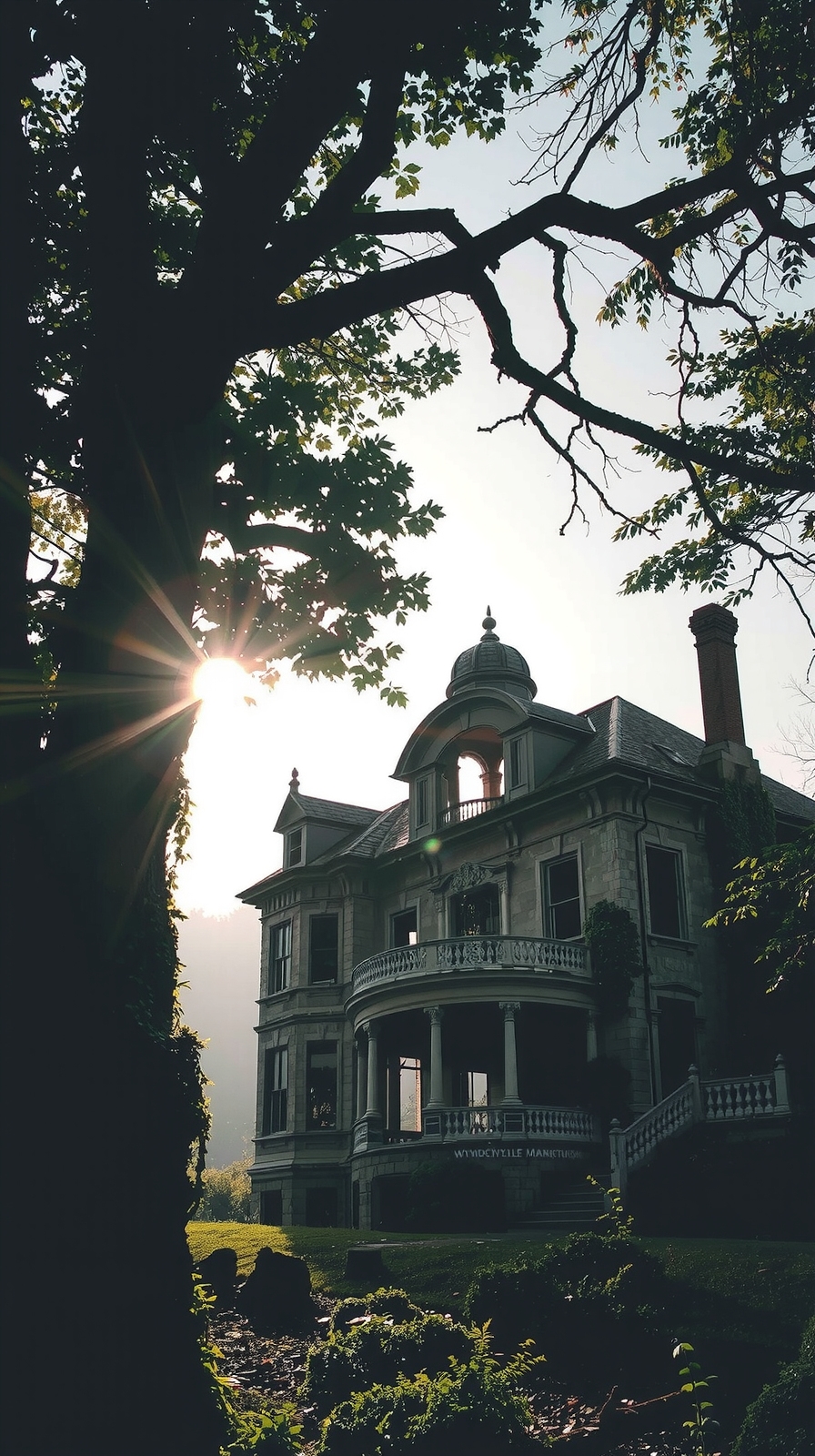
While Letchworth Village represents the tragedy of institutional neglect, another type of abandonment haunts the Hudson Valley, the decay of Gilded Age opulence.
Wyndclyffe Mansion, built in 1853 for socialite Elizabeth Schermerhorn Jones, inspired the phrase “keeping up with the Joneses.”
The Norman-style estate once hosted high society gatherings but now sits as an uninhabitable ruin, protected from demolition yet too deteriorated for restoration. The mansion’s decline began after Elizabeth’s death in 1876, leading to over a century of deterioration.
Central Warehouse: Albany’s Massive Abandoned Industrial Complex
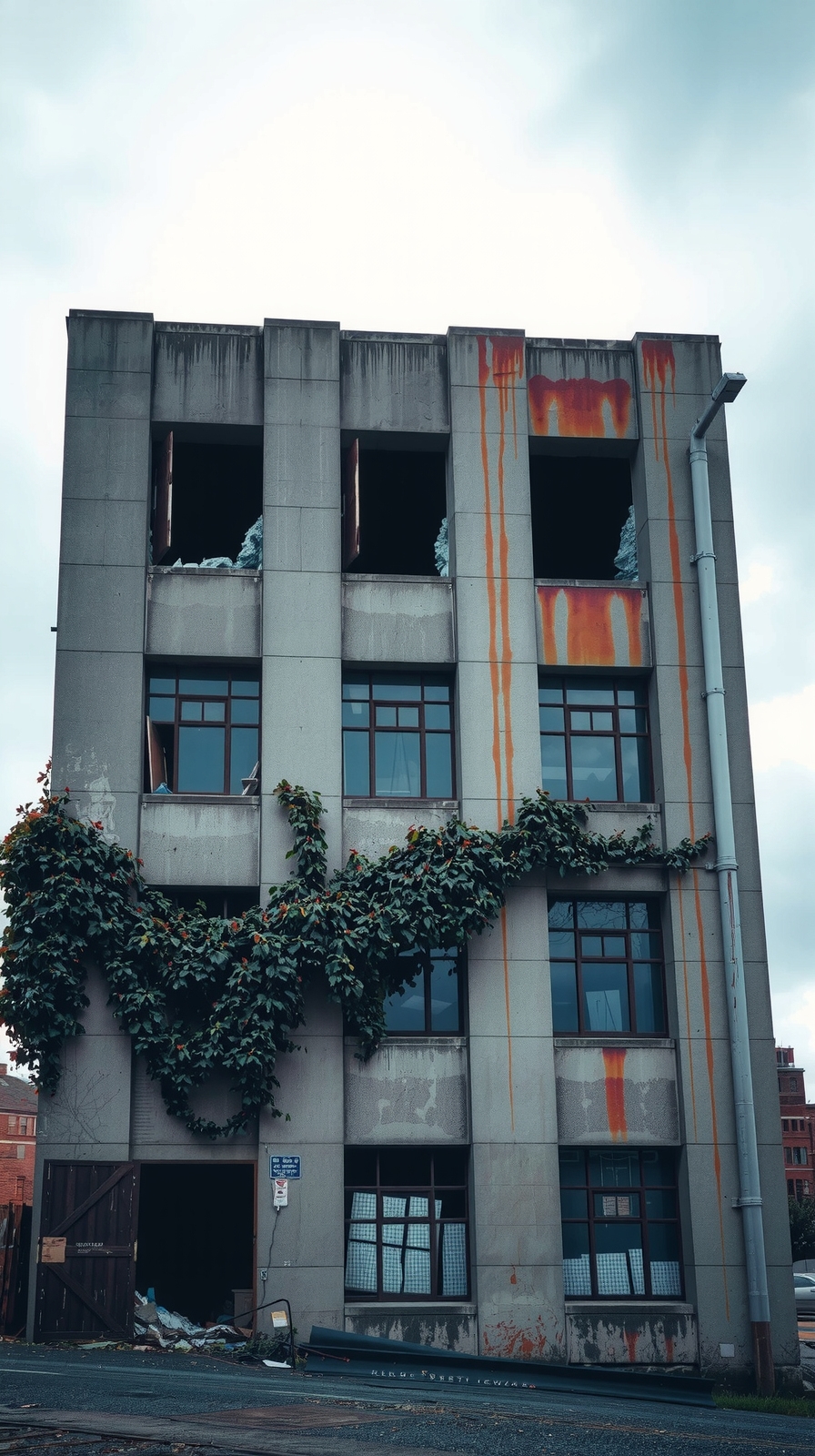
Rising eleven stories above Albany’s waterfront, the Central Warehouse has dominated the city’s skyline since 1927, though not in the way its builders intended.
This 500,000-square-foot refrigerated storage facility once symbolized industrial prosperity.
Today, its a crumbling concrete shell covered in graffiti, abandoned since the 1980s. Despite numerous redevelopment attempts and even a $1 sale, the building remains Albany’s most notorious eyesore.
Grossinger’s Resort: The Faded Glory of the Borscht Belt
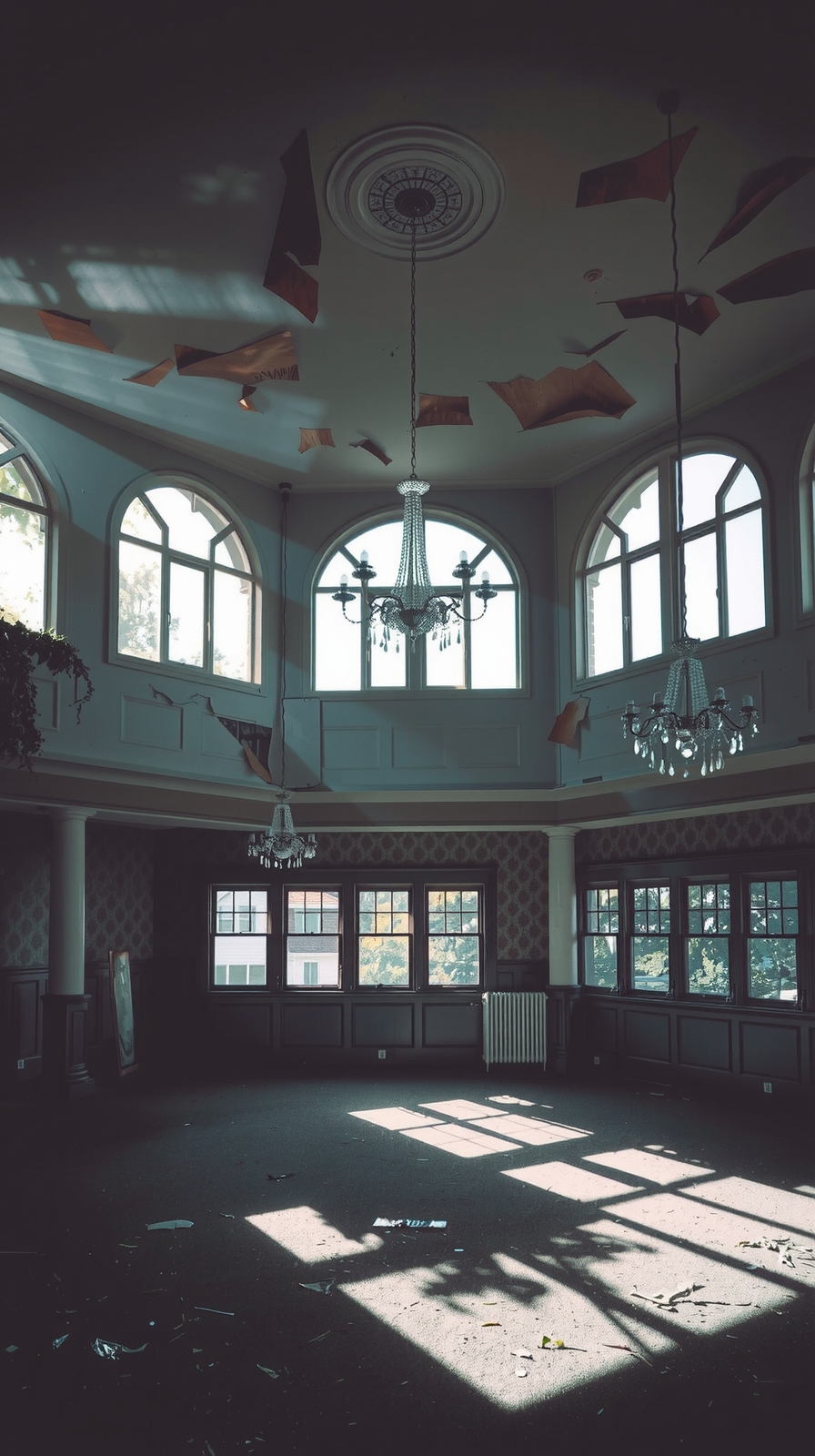
Deep in the Catskill Mountains, Grossinger’s Resort once stood as the crown jewel of the Borscht Belt, a sprawling vacation empire that defined Jewish-American leisure culture for over seven decades.
Founded in 1914, it grew from a modest boarding house into a 36-building complex with its own airstrip and post office.
Today, you’ll find only crumbling ruins of this entertainment mecca.
Rockland Psychiatric Center: Tragedy and Abandonment in Orangeburg

Born from catastrophe, Rockland Psychiatric Center emerged after a devastating 1923 fire at Ward’s Island claimed 24 psychiatric patients’ lives and exposed the dangerous overcrowding plaguing New York City’s mental health facilities.
Opening in 1931 on 600 acres in Orangeburg, this sprawling hospital initially promised modern treatment through agricultural therapy but descended into neglect, housing over 9,000 patients at its peak with ratios reaching 300 patients per psychiatrist.
P.S. 186: West Harlem’s Italian Renaissance School Left to Decay
When C.B.J. Snyder designed this Italian Renaissance H-shaped school in 1903, he couldn’t foresee its grim future.
After serving Harlem students for 72 years, P.S. 186 closed in 1975 due to violence and fire code violations.
The “dilapidated deathtrap” sat abandoned for 38 years, with trees sprouting through windows and hundreds of mummified pigeons inside until developers finally restored it in 2009.
Tahawus: The Adirondack Town Abandoned Overnight
Nestled deep in the Adirondack wilderness of Essex County, the ghost town of Tahawus has died and been resurrected more times than almost any settlement in New York State.
Founded as a mining town in 1827, its been abandoned three separate times due to transportation challenges and economic decline.
Today, only the McNaughton Cottage and McIntyre Blast Furnace remain standing.
Adirondack Iron Works: Remote 19th Century Mining Ruins
The iron deposits that drew settlers to Tahawus tell only part of the story of the Adirondack Iron Works, a sprawling industrial complex that rose and fell multiple times across nearly two centuries.
You’ll find a massive blast furnace that cost $43,000 to build in the 1850s, standing amid wilderness that reclaimed the site after titanium mining ceased in 1989.
Frontier Town: Abandoned Western Theme Park in the Mountains
Wild West fantasies once thrived in an unlikely location, high in the Adirondack Mountains, where a cowboy-themed amusement park transported visitors from New York wilderness to frontier saloons and dusty main streets.
Frontier Town opened in 1952, offering staged robberies and rodeos until declining interest in Western entertainment forced its 1998 closure.
Today, nature reclaims decaying buildings, grandstands, and train tracks leaving only ghostly remnants of this mountaintop frontier.
Camp Santanoni: Gilded Age Great Camp Frozen in Time
While Frontier Town‘s cowboys entertained middle-class families with affordable thrills, Camp Santanoni represented a starkly different vision of Adirondack recreation, one reserved exclusively for America’s industrial elite.
Built in the 1890s for banker Robert C. Pruyn, this 13,000-acre estate featured Japanese-influenced architecture and operated as a self-sufficient compound.
Today, it’s a National Historic Landmark, its preserved buildings offering haunting glimpses into Gilded Age excess.
Riverside Hospital: North Brother Island’s Quarantine Facility
Hidden in the East River between the Bronx and Rikers Island, North Brother Island‘s 20 acres harbor one of New York City’s most haunting medical facilities.
Riverside Hospital isolated patients with typhoid, tuberculosis, and smallpox from the 1880s until 1964.
You’ll find 25 decaying buildings where Mary Mallon, Typhoid Mary, spent 31 years quarantined until her death in 1938.
Lake Placid Club: Luxury Adirondack Hotel Now in Ruins
From the isolated quarantine wards of North Brother Island, New York’s abandoned sites also include grand monuments to leisure and luxury.
The Lake Placid Club, founded in 1895 by Dewey Decimal System inventor Melvil Dewey, once sprawled across 9,600 acres with over 356 buildings.
This pioneering winter resort hosted Olympic committees and employed 1,100 staff before its demolition in 2002, leaving only ruins behind.
Jennie G. Hotel: Liberty’s Overgrown Hilltop Lodge
The Borscht Belt’s golden age found its most celebrated expression at Grossinger’s, a sprawling resort empire that crowned a Sullivan County hilltop near Liberty, New York.
Jennie Grossinger transformed her family’s boarding house into a 35-building complex featuring an airstrip, year-round ice rink, and Catskills’ first artificial snow slope.
You’ll find nature reclaiming what once hosted Elizabeth Taylor, and Jackie Robinson.
Conclusion
You’ve now explored eighteen abandoned sites across New York, each telling a story of ambition, tragedy, and decay.
Before you visit these locations, remember what happened to urban explorer Jason Rodriguez in 2019, he fell through rotted flooring at an abandoned asylum, requiring rescue by emergency crews.
If you’re drawn to these haunting places, research access laws, bring proper equipment, and never explore alone. Your safety matters more than any photograph.








